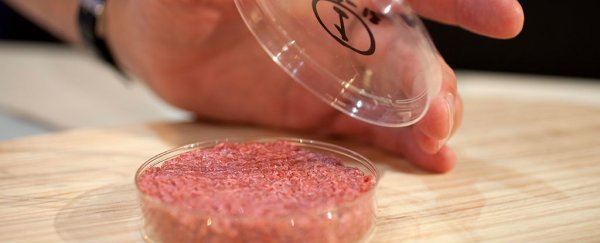Many of us enjoy the taste of a burger, but the negative impacts on the environment caused by the production of beef - not to mention the harm caused to the cattle providing it - are well known. Now there's hope for a better kind of beef: beef that's grown in a lab, and Dutch scientists think these artificially created 'test tube' burgers could be ready for public consumption within the next five years.
The very first lab-grown meat made from real beef stem cells was produced in 2013. However, at a price of US$325,000, it wasn't exactly a practical option for McDonald's or anywhere else to start putting on their menus. In the years that have followed, the process has been refined a great deal: a burger developed in a lab now costs just US$11.36, and 10,000 kilos of meat can be produced from a small piece of cow muscle.
And that rate of development continues to speed up. Previous estimates suggested that we might have had to wait 20 or 30 years before the process was efficient enough for lab-grown meat to be a regular part of our diet, but now researchers from Maastricht University in the Netherlands - the same team responsible for producing the first burger - think it's going to be a lot sooner.
"I feel extremely excited about the prospect of this product being on sale," Peter Verstrate, the head of the new firm set up to develop the meat, told the BBC. "And I am confident that when it is offered as an alternative to meat that increasing numbers of people will find it hard not to buy our product for ethical reasons."
To begin with, the meat would need to be specifically ordered; as prices came down and demand went up, then it could eventually find its way onto supermarket shelves. "I am confident that we will have it on the market in five years," said Mark Post, the Maastricht University Professor in charge of the project.
To make the burgers, stem cells are extracted from a cow using a procedure that's quick and harmless. These cells are then given nutrients and chemicals to encourage growth and multiplication. After several weeks, the cells - now more than a million in number - are moved to smaller dishes where they can be developed into small strips of muscle. Those strips are layered together, coloured, and mixed with fat to make the final burger.
As the BBC reports, an independent study shows that lab-grown beef uses 55 percent of the energy and 1 percent of the land compared with traditional methods. What's more, greenhouse gas emissions are reduced by 96 percent along the way.
